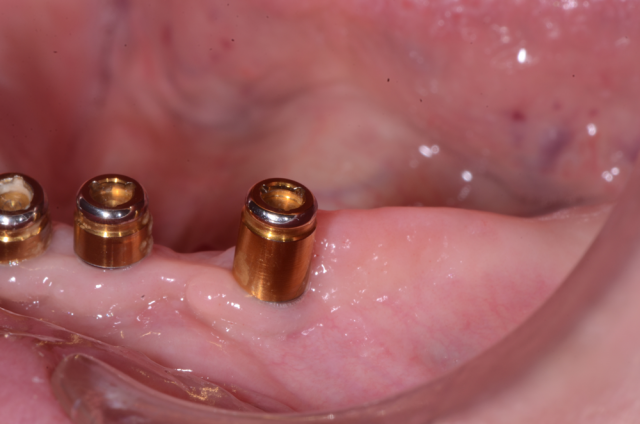A Primer on Locator Abutments for Implant Overdentures
By Mary Anne Salcetti on December 31, 2016 | commentsImplant overdentures have been utilized in removable prosthodontics for over 30 years. Many studies show that an implant-assisted overdenture offers increased retention and stability and thus a considerable improvement in quality of life.
Implant overdentures can be supported/retained by several different attachment systems, e.g., a bar and clip or individual attachments for improved retention. One such individual attachment is the locator, which was designed and developed by the Zest Anchor Company. Its overall design has recently changed, but it was originally developed by Max Zoest to help clinicians address the damage caused by the improper seating of overdentures and to customize the levels of retention.
The locator abutment has been a staple of removable prosthodontics because it is effective and a reasonable cost alternative to implant-supported fixed restorations. Improvements in abutment design and their attachment elements have made this treatment method very successful. The placement of the abutment and the selection, placement and replacement of the attachment is easy.
Yet there are mechanical complications that need to be continually addressed. Mechanical complications associated with implant overdentures include loss of retention, the need for relines, and the need for repair of the acrylic denture base and teeth. The most common complication encountered is wear, and the only solution is replacement.
There are few published guidelines and limited clinical research available to determine when to replace them, but if your locator abutments have the appearance below, it is time to replace them.


One recent article published by Mackie A. et al recommended that locator abutments be replaced every three years.1 Although it may not be necessary for every patient, it is a good guideline to follow.
The repair and replacement are not time consuming, cost is low and many of the procedures necessary are accomplished chair side. However, patients need to be informed at the initiation of treatment that maintenance is required.
Identifying the specific intervals for long-term care should be personalized for your patients with a recognition of the importance of a lifelong commitment to their program.
(Click this link to read more dentistry articles by Dr. Mary Anne Salcetti.)
Mary Anne Salcetti, D.D.S., P.C., Spear Visiting Faculty and Contributing Author - www.maryannesalcettidds.com
References
1. Mackie A, et al. Int J Prosthodont 2011;24(4):328-31